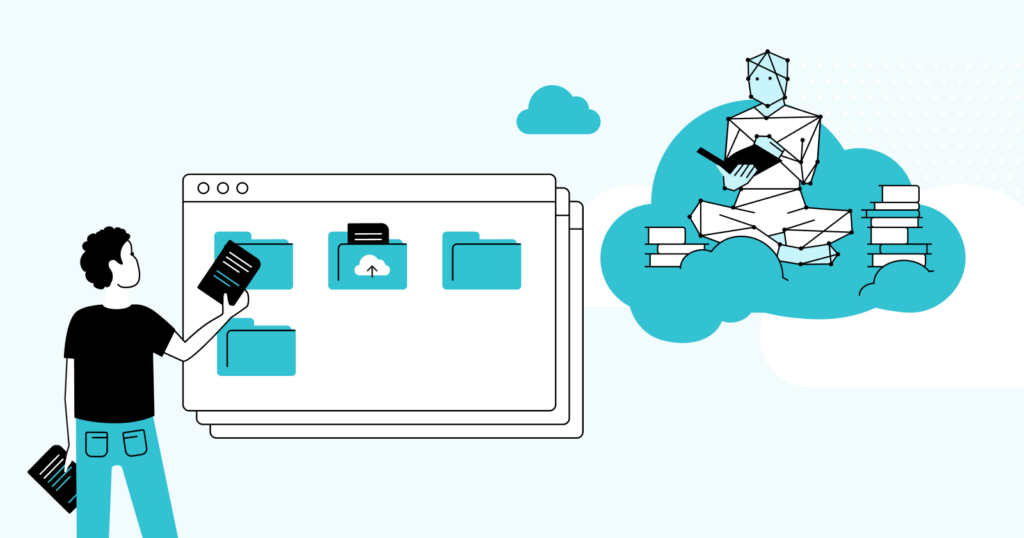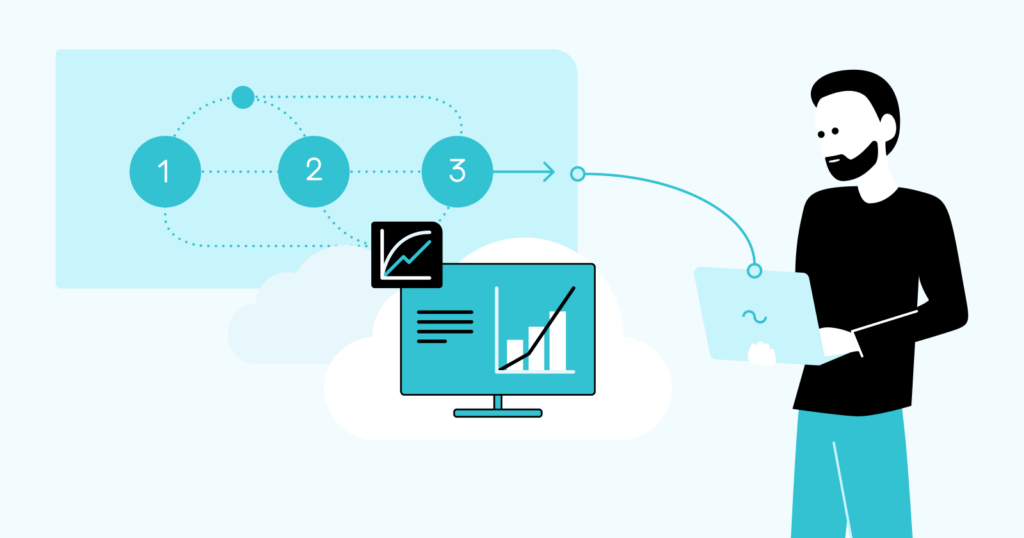Choosing the right cloud migration strategy [quick guide]
Post summary:
- What is cloud transformation?
- Why migrating to the cloud is critical for businesses
- Challenges in cloud migration
- Choosing the right cloud migration strategy
Choosing the right cloud migration strategy is no easy feat. Along with the roadmap to migrating your business infrastructure to the cloud, there will be inevitable challenges that must be overcome.
Fortunately, for those getting started with cloud migration, Proekspert has put together this quick guide to getting started.

What is cloud migration?
Cloud migration is migrating all an organization’s operations to the cloud per their business objectives. Transferring to the cloud involves modifying, upgrading, and moving an organization’s applications, differing in complexity, purpose, and criticality, from on-premise hardware.
By adopting a cloud migration, an organization can implement new technologies, respond to market needs faster, and scale their business operations quickly.
Moving a business’ operations to the cloud is the first step in a successful digital transformation strategy.
A quick history of cloud computing
The history of cloud computing began decades ago. Yet, it wasn’t until the millennium that the technology was effectively harnessed that it has shaken up the IT, enterprise, and small business landscape.
The adoption of cloud computing has skyrocketed. Rather than the digital transformation specialists’ domain, it has become the technological lifeblood that runs through every successful modern enterprise.
Cloud computing technology can refer to computing services, including the following:
- servers
- databases
- analytics
- intelligence
- networking
- software
- storage
Cloud computing allows faster innovation, flexible resources, and economies of scale.
Cloud computing has shifted user expectations for on-site hardware that has to be installed to a subscription model that offers pay-per-use features. Meaning organizations only pay for the services they wish to use.
This subscription model has reduced business costs and boosted infrastructure efficiencies, allowing organizations to scale their businesses faster.
Why should a business migrate to the cloud?
Migrating to the cloud makes it easier for businesses to run applications, store data, and scale new products without maintaining expensive on-premise IT infrastructure.
The organizations can even move their existing applications and data to the cloud through a straightforward process.
Migrating to the cloud offers businesses these six unique advantages:
- Faster time to market
- Better business insights and decision making
- Enhanced customer experience and service scalability
- Boosted innovation and agility
- Ensured business continuity
- Increased revenue potential
But no organization can eradicate cloud migration issues and the associated risks without planning the cloud migration strategy first.
It is business-critical for organizations to identify and embrace cloud migration’s key phases to address significant challenges.
Challenges in cloud migration
Cloud transformations being several challenges for IT teams and business leaders. Although its advantages are enticing, businesses who rush to adopt cloud computing quickly realize that a cloud migration strategy is not entirely straightforward.
Migration to the cloud introduces its challenges. Namely:
- People and processes slow down cloud adoption
- Data loss and cloud security concerns
- Costs
- Not having the necessary expertise
- Vendor lock-ins
- Concerns with data validation

Choosing the right cloud migration strategy
There are three cloud management strategies that companies should consider when taking advantage of the available cloud computing for their business.
Depending on their nature, some companies can settle on one migration plan that works across the board.
For others, a hybrid cloud migration strategy approach may be needed to achieve the best migrating data results.
These approaches are:
- ‘Lift and shift approach’
- Application refactoring
- Re-platforming
Lift and shift
Lift and shift is the primordial cloud management strategy that most companies have already used in some capacity when migrating data. Think of this as getting out of the data center. On-premise servers are no longer taking up valuable office space, costing excessive amounts of money to keep from overheating.
Besides reducing costs for server maintenance, you do not need to spend resources retraining staff on a new system. For instance, the method for storing files has not changed, just where it is saved. Reducing workloads and cold make cloud adoption easier for employees.
This option has minimal impact on most of your staff and the one with the least upfront costs.
Application refactoring
Application refactoring is also called application modernization. Application refactoring is the preferred approach for companies that utilize specific applications that would reap the benefits of being refactored for cloud-based usage.
The key difference when an application is refactored is that it pulls data from storage for analysis and completes its analytics and computations within the cloud.
Re-platforming
Re-platforming is best for companies looking to embrace the potential of cloud adoption across every aspect of their business.
This migration strategy typically occurs after lift and shift, and application refactoring has already begun, and performance exceeds expectations.
Usually, re-platforming has the most upfront costs to consider. Yet, it can fully realize the potential of cloud-based applications.
Using cloud migration services
Cloud migration services refer to how your business migrates to the cloud and the products you use to get there.
Cloud providers themselves have the services and migration tools to move an organization’s applications and data to the cloud.
These cloud migration services remove the pain of moving your assets by offering bespoke solutions.
Maybe your business requires more niche cloud technology. An IT partner like Proekspert can advise you on how best to migrate your organization and your needs.
Cloud migration with Proekspert
Legacy IT is holding your business back.
Without the cloud’s scalability, flexibility, and agility, your organization will struggle to find room to grow.
Fortunately, cloud migrations don’t have to be complicated. With the right strategy, services, and know-how in place, you can move your chosen applications and workloads to the cloud seamlessly.
If you’re considering migrating to the cloud and would like some further guidance, please contact a member of the Proekspert team today.













